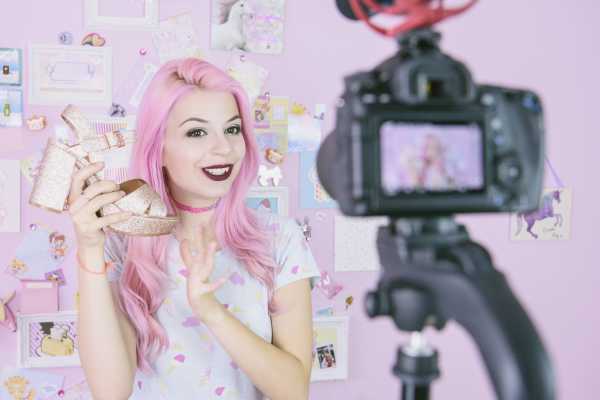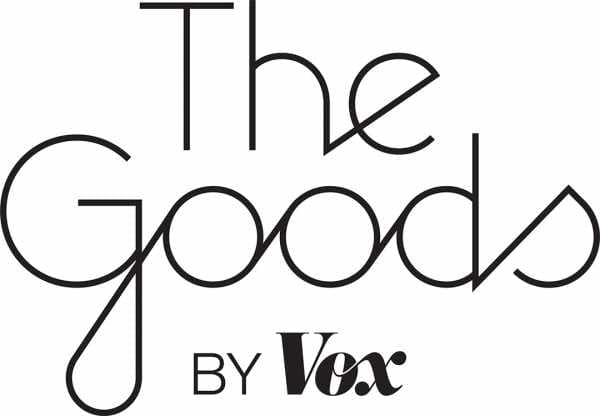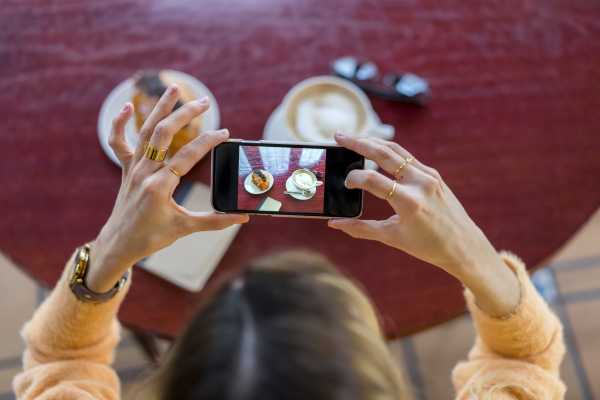

Open Instagram and scroll, and you likely can’t go more than a few seconds without seeing someone you follow promoting a brand, whether it’s a celebrity, a wannabe celebrity, or that random girl you went to college with who’s somehow managed to become a famous fashion blogger.
According to the influencer management platform Traackr, 72 percent of major brands say they are dedicating a sizable portion of their marketing budgets to influencers — people with a strong relationship to an audience who can heavily sway decisions like purchasing habits. Fashion bloggers and gym instructors, they believe, are the next step in advertising. They connect with people more deeply than a page in a magazine and can therefore sway potential customers.
The influencer space, which once consisted of semi-famous bloggers making some extra cash on the side, has turned into a bona fide career path. The industry has evolved significantly over the years, whether it was from weathering the storm of new Federal Trade Commission requirements that influencers must now explicitly say when they’re being paid, or the rise of buying fake followers.
One person in this crowded and often cutthroat space is Joe Gagliese, one of the co-founders of Viral Nation, an influencer agency that boasts the ability to “create the most viral, captivating and ROI-focused social media influencer campaigns for global brands.”
Viral Nation works with some influencers you probably know (like PewDiePie, one of the most followed people on YouTube), and plenty of others you likely haven’t heard of. By pairing them with major brands, Gagliese and his team of 50 take in millions in revenue through what you like, watch, and buy. I grabbed breakfast with Gagliese in New York City a few weeks ago to talk about the current state of the influencer industry. This interview has been edited and condensed.
How did you start out in the influencer space?
Me and my co-founder, Mathew Micheli, met in high school in Toronto and started Viral Nation in 2012. We had previously been running a liquidation business where we’d buy returned items from major retailers and sell them to liquidators, so we had brand connections.
I also used to be a hockey player and had a lot of friends who play in the NHL. About six years ago, one of our friends was working as an agent for an NHL player, and he let me work on a few endorsement deals for his client. I noticed that big brands like Under Armour were slipping social media requirements into contracts, but hockey players weren’t getting anything extra because no one really understood its value.
We spent a week studying platforms like YouTube, Instagram, Twitter, and Vine, and came up with a business model. We then started working with a few hockey players to build their social media presence and get them money off of their social. Our first client outside of the hockey space was a Vine star named Ray Ligaya, who actually works for us now. We signed a deal with him and Post cereal, and two weeks later, one client turned into 16. Within our first year, we signed about $500,000 in endorsement deals for influencers, and pretty soon, we had signed 700 influencers.
There are tons of influencer agencies out there. What makes Viral Nation different?
The reason we were successful is because we reached out to influencers, instead of going brand-side. We made ourselves be the ones that own the space of the influencers, whereas the different companies that wanted to work with brands have basically turned into our salesmen. Today, Viral Nation has relationships with 10,000 influencers, and is the biggest influencer agency in the space.
Who are the clients and influencers you work with?
We work with personalities like the gamer SSSNIPERWOLF [whose real name is Lia Wolf], [Lilly Singh, who goes by the online alias] IISuperwomanII, [the comedian] Bart Baker, Scotty Sire, Lewis Hilsenteger [who goes by Unbox Therapy], [and luxury content reviewer] Anish Bhatt.
In terms of brands, we work with hundreds, like Crayola, Anheuser-Busch, Spin Master, Match.com, Wish, Jet.com, Wrigley, Mars, Chinese tech giants Baidu and Tencent [a Chinese company that owns the messaging app WeChat], which is our biggest client by a long shot.
What sort of money does your company make?
Four years ago, Viral Nation was doing about $1.2 million annually, and last year we grew to $4.5 million. This year, the business is on track to make $20 million in deals.
Which platforms are influencers paid to make content on the most often?
It’s mostly Youtube and Instagram. Interestingly, over the last year and a half, not a single influencer has done a campaign with us on Snapchat.
What do influencers charge per post?
It depends on the influencer, and their follower numbers. A micro-influencer, which is someone that has 10,000 to 50,000 followers, is actually pretty valuable. They used to only pick up a couple hundred bucks, but today, they get a minimum of a few thousands dollars a post.
Influencers with up to 1 million followers can get $10,000 [per post], depending on the platform, and 1 million followers and up, you’re getting into territory where they can charge $100,000. Some can even get $250,000 for a post! Especially if the content is on Youtube and the influencer is in the gaming industry.
How much do typical influencers make annually?
People with smaller followings [who are known as nanoinfluencers] can make between $30,000 and $60,000 a year. The micro-influencers can make anywhere from $40,000 to $100,000. Celeb influencers make way, way more.
Why are these people considered so valuable?
These influencers have moved into celebrity territory. An endorsement from them is just as valuable as working with LeBron. They have incredibly engaged audiences and have an ability to push really big numbers.
We actually believe influencers are more impactful than athletes and TV stars because they are more relatable and so their audience is more tapped in. So it’s like, why pay a celebrity $50 million for a deal when that can be split up among influencers and make real impact?

I don’t see how you can track this monetarily, though. To me, social media likes and views seem like a fake commodity that’s impossible to quantify.
We work very carefully to pull data from our campaigns. We look at views, likes, engagement rates, watch times, click-through rates, comments, you name it, to share with brands. And the cool thing is we are able to actually guarantee a certain level of interaction.
Can you give me an example of how an influencer with a big following has proven their impact is equivalent to their follower numbers?
We work with this influencer, Demetrius Harmon, (who used to go by the handle MeechOnMars). He’s an African-American influencer who talks about anxiety and depression, and his engagement rate is something like 30 percent, which is obscene. He started a clothing line called You Matter, and everything sold out.
Have you ever seen an influencer campaign done wrong?
Uh, every day. Let’s use watches for an example, because I see you’re wearing a Michele watch. When influencers work with watch brands, everyone posts the same photo, which is a shot of them sitting in a cafe or somewhere, looking at their watch on their arm. In the caption, somewhere buried, is information about the watch.
That does absolutely nothing. The whole drive of an influencer, and what will get people clicking and buying, is to be creative. If you were good at the job, you’d talk about the watch and engage with the audience by telling them about its pros and cons, why you’d buy it, and who you’d buy it for. The reality is that 80 percent of the content in this industry is bad, like those watch photos, because that’s the easiest way to get it done. But the other 20 percent is what performs.
Is it easy to become an influencer?
No. It’s like winning the lottery. A lot of it is luck. Think of the guy who became famous for doing the Shiggy Dance [and helped Drake’s song In My Feelings blow up]. We were considering paying to go to a Lakers game as an ambassador for Wish. A few months ago, he didn’t exist! I think a lot of people want to be like him, but his fame won’t happen to most people. Being an influencer takes hard work, it’s a full-time job, and you could be working at it for four years before you hit it big.
Are there any strategies to that help people become one?
You have a great chance of being an influencer if you do something new or trending. Unfortunately, though, beauty wins. We’ve seen some fashion brands that don’t want to work with bigger girls. The landscape is kind of shitty in that way, especially for young girls, because the fastest-growing influencer industries are beauty and fitness. But that doesn’t mean it’s not impossible; there’s actually a lot happening on social that promotes the body positivity movements and there is a demand for these types of influencers more.
The other thing, of course, is to have access. A couple of guys just reached out to us and their thing is that they are extremely wealthy and own 20 cars that are Lamborghinis, Ferraris, and McLarens. Everyone wants to be a luxury car influencer, but these guys already have the access, so I know they will kill it on YouTube.
So you’re more likely to succeed if you’re privileged?
A lot of the times, yes, which kind of sucks about this industry now, that that’s what it’s come down to.
Let’s use me as a case study. I’m a short, Jewish, brunette journalist and new mom who likes hiking and fashion. How much would it cost to turn me into a profitable influencer? Would I need a tummy tuck, or a glamorous new wardrobe?
I would focus on your personality, not on your life, because you seem great and people relate to that. You could start blogging about your baby, or fashion, but I think people will like you more for you. From there, I’d say that for $250,000, we could help you become an influencer. We’d spend that making content and getting you doing collaborations. That would get you exposure to a point where brands will want to endorse you. But just to be clear, we don’t do that. We only work with influencers who are already at that level.
What are some of the negative aspects of being an influencer?
We’ve seen loyal followers turn on people really fast. Say something racist and you can count on your career being over instantly. I guess it speaks to the power of the platform, in that you can be built up really fast, but you can also lose everything really easily, because in reality, a lot of these relationships are [just] digital.
Is there anything you think brands are approaching wrong in this space?
I think a lot of brands want influencers that are young, and have the millennial and Gen Z audience. In reality, though, a middle-aged audience is also a valuable demographic, because they are responsive on social media. Women in their 40s are actually prone to spending the most money. We work with this one influencer, Gerry Brooks, for example, who is a school principal and a Facebook personality with almost 1 million likes; 90 percent of his followers are women who work as teachers, and are 35 and up. That is a unique, and lucrative, audience.
Do you find that it’s harder to trust Facebook, knowing that they’ve been accused of lying about numbers in the past?
No. Facebook and Google have built my life, and I think there’s so much going on in this space that it’s easy for things to get lost. Maybe someone internally within the organization was given too much free rein, but I don’t think the organization would ever condone something like that. I guess I trust these guys too much. I see a lot of what they do for creators, and I think they do a tremendous amount to help out businesses.
Have you ever had an issue with influencers who buy followers?
Never. We look for red flags, like if someone’s comments are all emojis but no real words, or if the data about views shows that they are all coming from Bangladesh or the Philippines. We know this space pretty well, but I think a lot of marketing people don’t, so I definitely would say it’s a problem in the industry. We take it really seriously, though; we put in our contracts that influencers can’t buy followers, and if they do, they’re at the risk of getting sued by brands.
Since this is your career, and I imagine it takes up most of your life, do you feel like you live in a fake world?
Totally. It can feel pretty terrible sometimes, because nothing feels tangible. But what I do do for self-care is limiting social media. I’m not on Facebook.
But don’t you think it’s ironic that the guy who churns through millions between brands and digital celebrities limits the very mediums he’s pushing?
Well, I love this business, and I definitely love working in an industry that’s full of entrepreneurs. I just prefer to separate my personal life with social media.
What are your thoughts about the next wave of influencers not even being real people? Like, those digital avatars, Lil Miquela or Shudu, landing campaigns?
I think it’s insane and, frankly, wrong. It doesn’t feel right that kids should be watching and interacting with something that doesn’t exist, and is just a puppet being strung up by some guy. I think it represents a part of technology that could make the kids go really crazy. I think that are tons of influencers who do amazing things and you can tell that audiences love them. But once you start working in the fake influencers, it becomes kind of scary.
Update 11/28: This post has been updated with additional commentary from Gagliese on the issue of body positivity in the influencer field.
Want more stories from The Goods by Vox? Sign up for our newsletter here.
Sourse: vox.com






